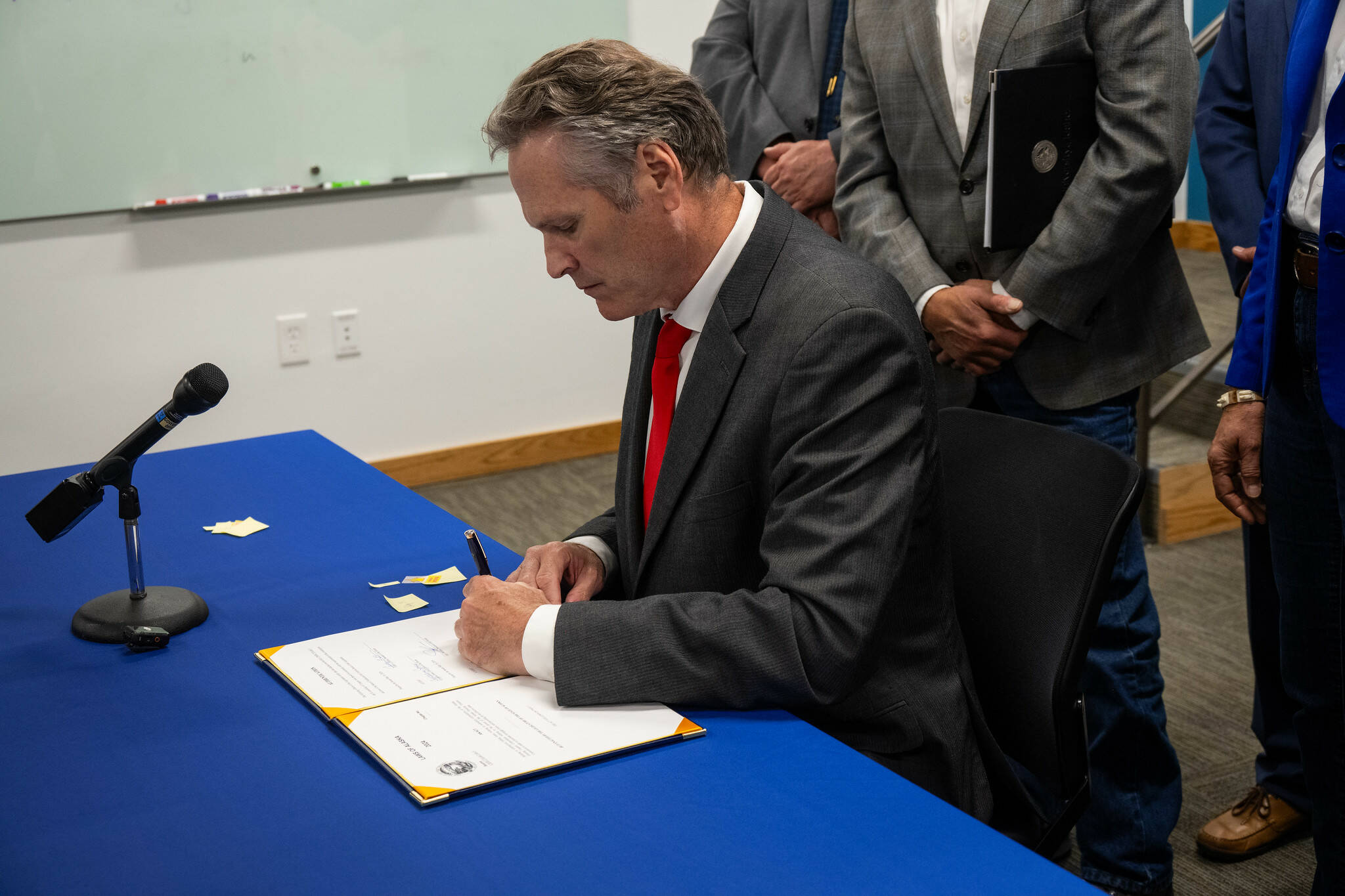Gov. Mike Dunleavy last week signed three energy bills into law, including one that may affect local energy rates.
According to a press release from the Office of the Governor, House Bills 50, 307 and 273 were all signed on Wednesday, July 31, in Anchorage.
Those bills, respectively, describe a regulatory framework for the use of carbon capture, utilization and storage; eliminates “wheeling rates” along Alaska’s Railbelt; and establishes the Alaska Energy Independence Fund as a subsidiary of the Alaska Housing Finance Corporation.
“Energy is the lynchpin of modern society,” Dunleavy said in the release. “The bills I signed today will both help individual Alaskans secure more affordable and reliable energy, and allow the State of Alaska to further develop its natural resources for the benefit of the people.”
Rep. Justin Ruffridge, R-Soldotna, discussed two of those bills in an update to the Kenai and Soldotna chambers of commerce the same day they were signed.
H.B. 307, targeting wheeling rates, is one that Ruffridge said he wasn’t in support of. He said the bill is intended to align every transmission line on the railbelt, connecting Bradley Lake near Homer to Fairbanks. Those lines would be managed by the Alaska Energy Authority to prevent wheeling rates, fees paid when energy is moved from one utility to another. Power is more expensive in Fairbanks, for example, because they’re paying to transfer power from Bradley Lake, where its owned by Homer Electric Association, through Chugach Electric, all the way north.
“Fairbanks would see a reduction in their cost of power as a result of not having to pay those rates,” Ruffridge said. “Our rates would go up.”
Ruffridge described the bill as subsidizing Fairbanks power.
In Dunleavy’s release, AEA Executive Director Curtis W. Thayer said the bill is “one of the most important pieces of legislation affecting energy policy for the Railbelt in over 30 years.”
The release said that by eliminating wheeling rates, the “lowest cost power” will be distributed through the grid.
The other bill Ruffridge discussed, H.B. 50 tackling carbon storage, is a step toward helping the state produce more energy, he said. As a forecast shortage of natural gas supply from Cook Inlet producers looms, Ruffridge said further action needs to be taken to promote energy development, and in the meantime, users might see their rates go up.
“Be prepared,” he said. “For the idea of having to pay more for energy.”
The carbon storage bill was created at the request of the governor’s office, Ruffridge said, and seeks to promote resource production by allowing Alaska to engage with carbon storage and carbon offset plans.
The governor’s release said that under the law, the State can charge producers to use public lands to sequester carbon dioxide. That move will allow for new revenue, it said.
The bill also expands natural gas storage statutes, which the release said will allow the Alaska Industrial Development and Export Authority to make loans for oil and gas projects “needed to increase Cook Inlet production.”
Ruffridge said railbelt energy “will continue to be a huge topic in the next legislative session.” Without further moves made to promote Cook Inlet production, Ruffridge said, local utilities may well be soon importing natural gas. He said that Enstar has already proposed construction of an import facility to bridge the foreseen gap between production and demand.
“We are running out of Cook Inlet natural gas from the current players in that market,” he said. “Unless something is changed very soon, we may have to be paying a little bit more for our energy.”
Reach reporter Jake Dye at jacob.dye@peninsulaclarion.com.

